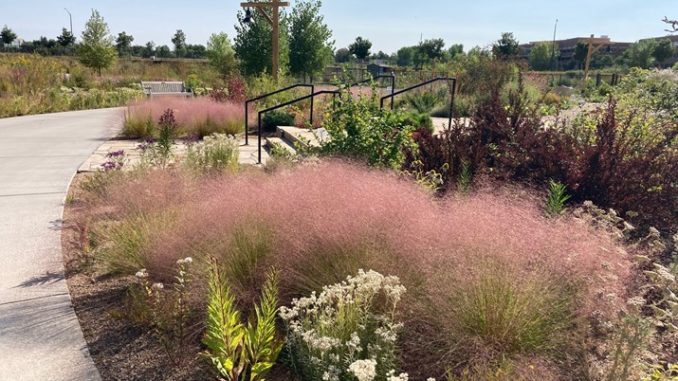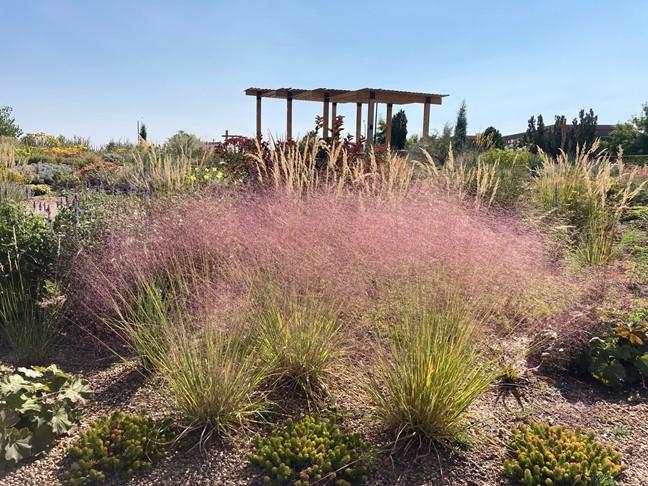
by Rita Jokerst, Horticulturist, Gardens on Spring Creek
As people transplant themselves across the country, they may want to do the same with their darling plants – ignoring the soil, precipitation or pest pressure conditions in their new locale. In this article, I discuss alternatives to some less-than-ideal plants for the Front Range.
Our first two no-go plants are Erianthus ravennae (hardy pampas grass) and Miscanthus sinensis (maidenhair grass). Both grasses have been shown to escape cultivated areas and spread in the wild, and their need for moisture just doesn’t play nicely with arid Colorado summers. When considering alternatives, think about how much space you have.
For larger areas, consider Sporobolus wrightii (giant Sacaton grass), a Southwestern native with fountains of foliage topped by golden seed heads. Reaching up to seven feet tall and five feet wide, this Goliath of grasses can be an impressive anchor in your garden.
For smaller areas, consider Calamagrostis brachytricha (Korean feather reed grass) or Muhlenbergia reverchonii ‘PUND01S’ (Undaunted® Ruby Muhly grass). The former is an elegant, four-season grass well-suited to variety of sites and conditions and the latter is a fine-textured grass with small pink flowers that dazzle when backlit in autumn mornings or evenings.

As for trees, skip the hype over Acer x freemanii ‘Autumn Blaze’ (Autumn Blaze maple) which are very prone to chlorosis in our soils. Instead choose smarter selections of Acer saccharum (sugar maple) which are better suited to our region. Consider planting ‘Green mountain’ or ‘Bailsta,’ the latter being commonly trademarked as Fall Fiesta® sugar maple. These are long-lived, excellent shade trees with brilliant fall color.
Finally, for the love of all that is beautiful and healthy in your yards, DO NOT PLANT Populus tremuloides (quaking aspen). These trees don’t like our elevation, summer heat or urban pollution, making them quite susceptible to a variety of diseases including cankers, heart rot, leaf spot and rusts.
Instead, look to Amelanchier x grandiflora ‘Autumn Brilliance’ (apple serviceberry). This adaptable plant provides forage for birds and multiple seasons of interest, although its fall display is absolutely the final selling point for this plant. Remove root suckers to keep this serviceberry looking like a tree rather than a shrub.
If you truly insist on getting an aspen, consider sourcing a more specialty one – Populus tremuloides ‘NE Arb,’ commonly trademarked as Prairie Gold® aspen. This variety is a Nebraska native touted as being more adapted to lower elevation gardens with drought, heat and disease tolerance not found in mountain species. The Gardens has three of these bad boys in out Foothills Garden, and we are excited to see how they perform in the coming years.
Support Northern Colorado Journalism
Show your support for North Forty News by helping us produce more content. It's a kind and simple gesture that will help us continue to bring more content to you.
BONUS - Donors get a link in their receipt to sign up for our once-per-week instant text messaging alert. Get your e-copy of North Forty News the moment it is released!
Click to Donate
